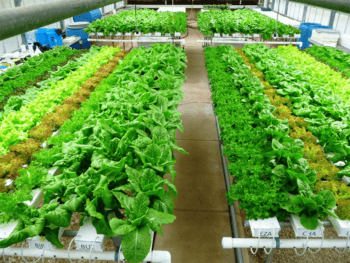Growing High-Value Lettuce With Low Water Use

Even with the recent rains, vegetable producers in Southwest Texas know it’s just a matter of time before another drought.
That’s why it is important to find alternative water-use efficient methods for growing vegetables, said Dr. Daniel Leskovar, director of the Texas A&M AgriLife Research and Extension Center in Uvalde. Recent research at the center studied hydroponic production of high-value lettuce cultivars using minimal water.
“Field production of vegetable crops in Southwest Texas is limited by strict regulations of water use for irrigation and by adverse environmental conditions such as drought and heat stress,” said Leskovar, also a Texas A&M AgriLife Research vegetable physiologist. “Because of this, the vegetable industry has been increasingly interested in maximizing water-use efficiency when growing premium leafy vegetables with consumer appeal.”
He said AgriLife Research has been collaborating with the Uvalde County Underground Water Conservation District on a grant from the Texas Department of Agriculture to study water-use efficiency and other aspects of high-value lettuce types.
“The Uvalde water district is our primary partner in this research and is instrumental in helping us with the direction of this study and in determining the use of the results,” Leskovar said.
For the past few years, the center has been investigating the feasibility of hydroponically growing vegetables in Southwest Texas. Most recently, investigations by Leskovar and Vasile Cerven, an AgriLife Research postdoctoral researcher in vegetable physiology at the Uvalde center, have focused on the growth and evaluation of 12 types of high-value lettuce.
Continue reading on AgriLife Today.
This article by Paul Schattenberg originally appeared in AgriLife Today.





